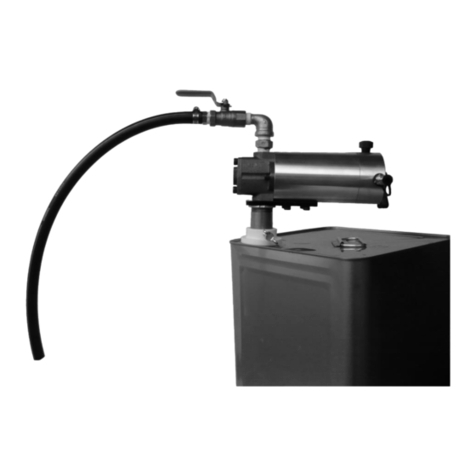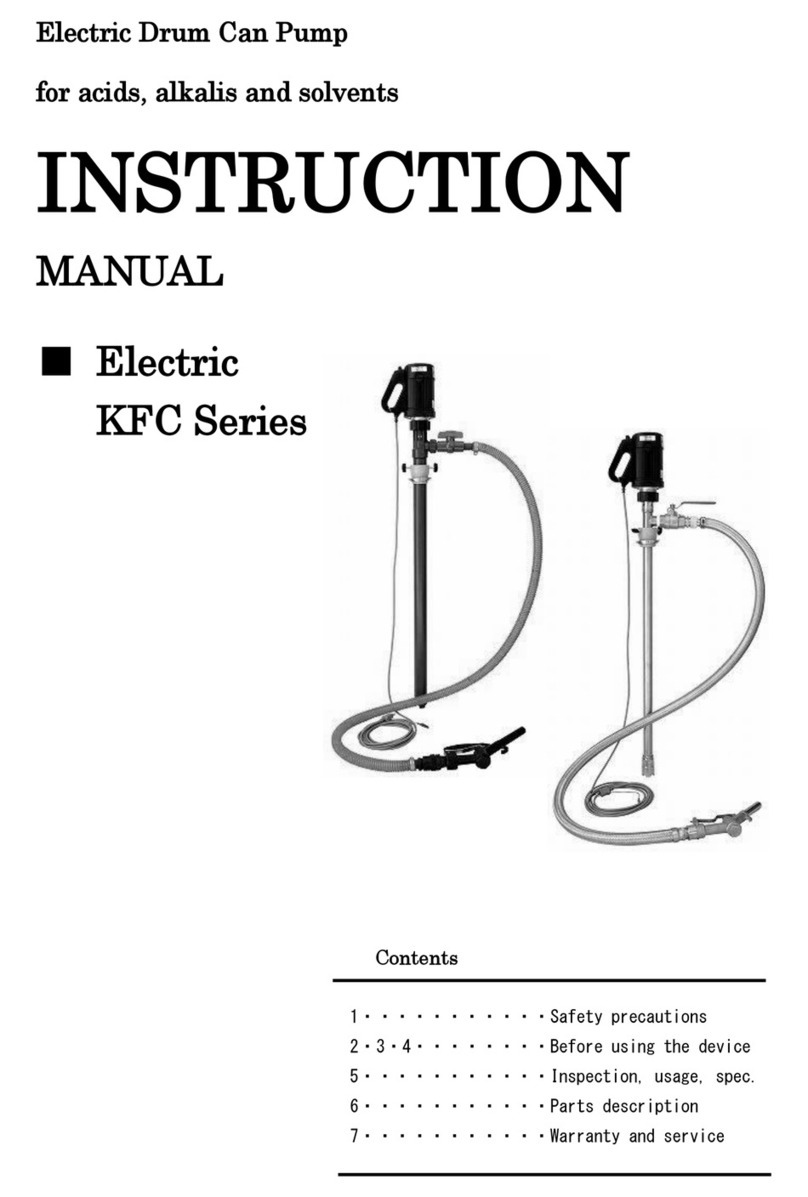
Cycle the pump slowly for at least 5 minutes, then
stop and disconnect the air hose. Push up on the
ball of the intake valve (N) to drain the lower part
of the pump. See Fig. 4. Turn the pump over to
drain the upper part of the pump.
Starting and Adjusting the Pump
With the air valve (K) or regulator (CC) closed, turn on
the air supply and connect the air line coupler (L). See
Figs. 3 or 5. Make sure all dispensing valves are open.
Slowly open the air valve (K) or regulator (CC) until the
pump cycles 5 to 20 cycles per minute. The pump itself
only takes a few strokes to prime. In a large system,
however, the pump may have to be cycled for several
minutes to fill all the lines. Once the entire system is
primed, use the air valve or regulator to control pump
speed and cycle rate; always use the lowest pressure
necessary to get the desired results. When used for
transfer and supply operations with no dispensing
valve, the pump will run whenever air is supplied.
Pump Shutdown
To reduce the risk of serious injury whenever you are
instructed to relieve pressure, always follow the
Pressure Relief Procedure at left.
1. Disconnect the air line coupler (L).
2. Relieve the pressure.
Operation
Pressure Relief Procedure
1. Shut off the air to the pump.
2. Close the bleed-type master air valve (required in your system).
3. Hold a metal part of the dispensing valve firmly to the side of a
grounded metal pail, and trigger the valve to relieve pressure.
4. Open the fluid drain valve (required in your system) to relieve all
fluid pressure, having a container ready to catch the drainage.
5. Leave the drain valve open until you are ready to dispense
again.
If you suspect that the nozzle or hose is completely clogged, or that
pressure has not been fully relieved after following the steps above,
very slowly loosen the hose end coupling and relieve pressure
gradually, then loosen completely. Now clear the nozzle or hose.
Flush the Pump Before Using
The pump was tested in lightweight oil, which was left in to protect
pump parts. To prevent contamination of the fluid you are pumping,
flush the pump with a compatible solvent before using it. To flush
the pump, connect a short hose to the pump outlet, insert the pump
intake into a pail of compatible solvent, direct the hose into a pail,
PRESSURIZED EQUIPMENT HAZARD
The system pressure must be manually relieved to prevent
the system from starting or spraying accidentally. To reduce
the risk of an injury from accidental spray from the gun,
splashing fluid, or moving parts, follow the Pressure Relief
Procedure whenever you:
⚫are instructed to relieve the pressure,
⚫stop spraying,
⚫check or service any of the system equipment,
⚫or install/clean the spray nozzle.





























